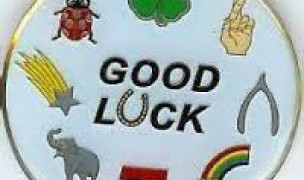 21 Terms
21 TermsHome > Terms > English, UK (UE) > Turret-clock striking
Turret-clock striking
The great majority of turret clocks use count-wheel control in one form or another. Count wheels appear with notches on either the inner or outer side of the ring. Many of the older clocks had internally cut teeth, and were supported by four arms offset from the disc to allow the driving pinion space to turn. Another type of tooth has pins set axially in the periphery of the wheel, rather than notches. The pins are set either into a wheel driven directly by a pinion, or into a wheel having ratchet-shaped teeth collected tooth by tooth by a rotating gathering pallet. Rack striking appears on a few later clocks. In clocks made by the E. Howard Clock Co. Of Boston, Massachusetts, the rack slides linearly against the snail rather than rotating as is more common. Many turret clocks of the wooden door-frame variety have a long lever on the second arbour which has become known as the flail, the end of which is turned at right angles and locks against a similar lip on the locking lever, which in turn normally rests in a notch in the count wheel. The hour wheel carries an arm which lifts the locking lever but prevents the flail rotating by engaging with the lip. When the hour wheel rotates far enough the hour lever disengages the train, which runs until the next notch in the count wheel allows the locking lever to drop and lock the flail. Another type of control, frequently found on wooden-framed clocks, is the percussive type. The locking takes place against a protruding stud on the second wheel, and a second locking lever falls into a notch in the count wheel. A small arm on the hour wheel raises a pivoted weight and lets it go on the hour. A thin rod or wire communicates the impact of the weight falling to the locking levers and knocks them out of engagement. Before the levers fall again under the action of gravity the train starts to run, and continues to do so until the next notch in the count wheel causes it to relock. Percussive letting-off work is occasionally found on iron clocks. Pins for lifting the hammers were in use until the mid 19th century. Normally six or eight in number, they were on either the great wheel or second wheel, depending on the number of wheels in the train. Lord Grimthorpe introduced a specially shaped cam for the purpose which gave a rolling rather than rubbing action, with less wear. As many as 60 were cast integrally with the great wheel.
- Part of Speech: noun
- Synonym(s):
- Blossary:
- Industry/Domain: Chronometry
- Category: Clock
- Company:
- Product:
- Acronym-Abbreviation:
Other Languages:
Member comments
Terms in the News
Featured Terms
Asian unicorn
Also called saola, the Asian unicorn is a rarely-seen animal which lives in the Annamite Mountains bordering Laos and Vietnam. There are no known ...
Contributor
Featured blossaries
marija.horvat
0
Terms
21
Blossaries
2
Followers
Essential English Idioms - Advanced
 21 Terms
21 TermsBrowers Terms By Category
- Social media(480)
- Internet(195)
- Search engines(29)
- Online games(22)
- Ecommerce(21)
- SEO(8)
Online services(770) Terms
- Poker(470)
- Chess(315)
- Bingo(205)
- Consoles(165)
- Computer games(126)
- Gaming accessories(9)
Games(1301) Terms
- Cables & wires(2)
- Fiber optic equipment(1)
Telecom equipment(3) Terms
- Cheese(628)
- Butter(185)
- Ice cream(118)
- Yoghurt(45)
- Milk(26)
- Cream products(11)
Dairy products(1013) Terms
- General seafood(50)
- Shellfish(1)




